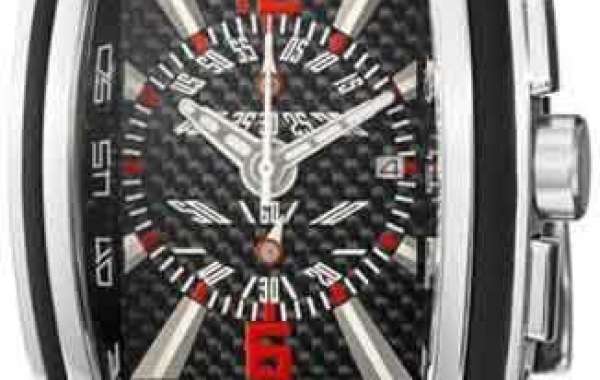IP cameras are taking over the world of surveillance—and for good reason. A recent study shows that 70% of businesses are switching from traditional CCTV systems to IP cameras. Why? Because they offer clarity, flexibility, and integration that old systems just can't match.
But here’s the catch: an IP camera alone isn't always enough. Enter the DVR (Digital Video Recorder), a critical piece of the puzzle that helps store and manage all that high-definition footage. Want to know how it all works together? How an IP camera and DVR team up to give you seamless security and peace of mind? Let's dive in.
By the end of this article, you'll understand exactly how an IP camera with DVR operates, why it matters for your security, and how it can be the smartest upgrade for your system. Let's get started.
What is an IP Camera?
An IP (Internet Protocol) camera is a type of digital video camera that receives control data and sends image data via the internet. Unlike analog CCTV cameras, which require a dedicated cable system, IP cameras are part of your existing network. This flexibility allows them to integrate seamlessly with other security tools, making them a popular choice for modern surveillance systems.
One of the main advantages of IP cameras is their image quality. They offer high-resolution footage, sometimes even in 4K, which makes identifying people and events easier. Plus, the cameras can be accessed remotely, giving you a live feed of your property from anywhere in the world.
How Does a DVR Fit In?
A DVR, or Digital Video Recorder, is an essential component in a surveillance setup involving IP cameras. The DVR takes the digital footage captured by the cameras and records it for future review. While IP cameras themselves have evolved to offer cloud storage and other modern solutions, having a DVR is still valuable, especially for local recording without depending on internet access.
The DVR can store footage for a set period, allowing users to rewind and watch past events. This feature is crucial for investigating incidents, providing law enforcement with evidence, or even keeping tabs on what's happening when you aren't around. The beauty of pairing a DVR with an IP camera lies in its ability to provide redundant recording—keeping a local copy of all your footage even when other systems might fail.
IP Cameras vs. Analog CCTV
You might wonder, why all the fuss about IP cameras when traditional analog CCTV systems have been around for decades? The difference lies mainly in the resolution, flexibility, and accessibility. Analog cameras are limited in resolution, which often results in grainy, low-quality images. IP cameras, on the other hand, can offer much higher resolution—making a big difference when it comes to identifying details.
Moreover, analog systems are harder to integrate into modern smart security solutions. IP cameras work on the same network as your other devices, allowing integration with smart locks, alarms, and even voice assistants. This level of connectivity allows you to create a highly customizable and responsive security environment.
Setting Up an IP Camera with DVR
To get the most out of your surveillance system, you need to know how to set up CCTV camera with a DVR effectively. The setup process is relatively straightforward, but it does involve a few technical steps to ensure everything works smoothly.
Plan Your Camera Placement: Decide where you need coverage. Focus on entry points, blind spots, and vulnerable areas that need constant monitoring.
Install the Cameras: Mount the cameras at the locations you have identified. Make sure they are high enough to be out of reach and angled to provide the best coverage.
Connect to the Network: Use Ethernet cables to connect your IP cameras to the network. This allows them to communicate with your DVR and other devices.
Configure the DVR: Once the cameras are connected, configure the DVR. Assign IP addresses to each camera and ensure they are communicating correctly with the DVR. This is the stage where you set recording schedules, alerts, and storage preferences.
Test the System: Once everything is connected, test the entire system. Ensure that all cameras are recording to the DVR, and that you can access the live feed remotely if needed.
Benefits of Using a DVR with IP Cameras
Pairing an IP camera with a DVR offers several advantages. Let's look at some of the most compelling reasons to use this setup:
1. Redundant Storage
Relying solely on cloud storage can sometimes be risky—issues like connectivity problems or service outages can prevent footage from being uploaded. A DVR provides local storage, ensuring that you have a copy of all footage, no matter what happens to your internet connection.
2. No Monthly Subscription Fees
Many modern IP cameras offer cloud-based recording options, but they often come with a monthly subscription fee. With a DVR, you can avoid these costs and still have all the features you need for reliable video recording.
3. Better Control Over Footage
Having a DVR means that you have physical control over your recorded footage. This is important for privacy and data protection. You can decide who has access, how long footage is stored, and how it's deleted when no longer needed.
4. Integration with Existing Security Systems
If you're a business owner or a homeowner who already has some security infrastructure in place, adding a DVR to your IP camera system makes integration easier. DVRs are designed to work seamlessly with other systems, allowing you to combine video monitoring with alarms, motion detectors, and more.
Choosing the Right DVR for Your IP Camera
Not all DVRs are created equal, and picking the right one is key to maximizing your surveillance system's effectiveness. Here are some factors to consider when choosing a DVR:
1. Compatibility
Ensure that the DVR you choose is compatible with your IP cameras. Some DVRs are designed specifically for certain camera brands, so make sure that they will work together seamlessly.
2. Storage Capacity
Consider how much footage you want to store and for how long. DVRs come with different storage capacities, typically measured in terabytes (TB). The more storage you have, the longer you can keep your recordings before they are overwritten.
3. Number of Channels
The number of channels determines how many cameras you can connect to the DVR. Make sure the DVR has enough channels to support all the cameras you plan to use—and maybe even a few extra for future expansion.
4. Remote Access
Many DVRs offer the ability to access your footage remotely via a smartphone app or web portal. This feature is essential if you want to keep an eye on your property while you're away.
The Role of Security System Companies
Setting up an effective surveillance system isn't always a DIY project. In many cases, it's better to work with professionals who understand the ins and outs of security technology. A security system company Aurora can help you design and install a surveillance system tailored to your needs, ensuring that all components work harmoniously and provide the coverage you need.
Professional security companies offer a range of services, from equipment selection and installation to maintenance and monitoring. They can also provide valuable advice on camera placement, system configuration, and future upgrades, saving you time and preventing costly mistakes.
Maintaining Your IP Camera and DVR System
Once your system is up and running, regular maintenance is crucial to keep it functioning optimally. Here are some maintenance tips:
1. Regular Cleaning
Dust and grime can affect camera lenses and reduce image quality. Make sure to clean the lenses regularly with a soft, dry cloth. Check the DVR for dust buildup, too, as this can impact its performance.
2. Software Updates
Both your IP cameras and DVR may require occasional firmware updates. These updates can improve functionality, add new features, and fix security vulnerabilities. Make sure to check for updates and install them as needed.
3. Check Connections
Loose connections can lead to cameras going offline or footage not being recorded. Periodically check all cables and connections to ensure everything is secure.
4. Test Backup Power
If you have a backup power source, such as an uninterruptible power supply (UPS), make sure it's functioning correctly. A power outage can leave your property vulnerable if your surveillance system goes offline.
Future Trends in IP Camera and DVR Technology
The field of video surveillance is constantly evolving. As technology advances, we can expect to see several innovations that will enhance the capabilities of IP cameras and DVRs. Here are a few trends to watch:
1. AI and Video Analytics
Artificial intelligence is transforming surveillance by making it smarter and more proactive. AI-driven video analytics can detect unusual activity, recognize faces, and even identify specific objects. This makes your surveillance system more efficient and less reliant on human monitoring.
2. Edge Storage
Edge storage involves storing video footage directly on the camera, reducing the load on the DVR and providing an additional layer of redundancy. This is particularly useful for installations in remote areas where connectivity might be an issue.
3. Enhanced Cybersecurity
With more IP cameras being connected to the internet, cybersecurity is a growing concern. New advancements focus on encryption, multi-factor authentication, and other security measures to protect your surveillance system from hackers.
4. Cloud Integration
While DVRs offer local storage, cloud integration is becoming more common for offsite backup. Many systems are now offering hybrid solutions that combine the reliability of DVR storage with the convenience of cloud access.
Conclusion
Understanding how an IP camera with DVR works is key to setting up an effective security solution. By combining high-definition video, reliable local storage, and seamless network integration, you can create a robust surveillance system that keeps you informed and in control. Whether you're a homeowner looking to secure your property or a business needing comprehensive coverage, this combination provides the flexibility and reliability you need.
Don't underestimate the importance of proper installation and regular maintenance. And remember, working with professionals can save you time and ensure your system is set up correctly from the start. A well-designed surveillance setup not only protects your property but also gives you the peace of mind that comes with knowing you're always in the loop.










